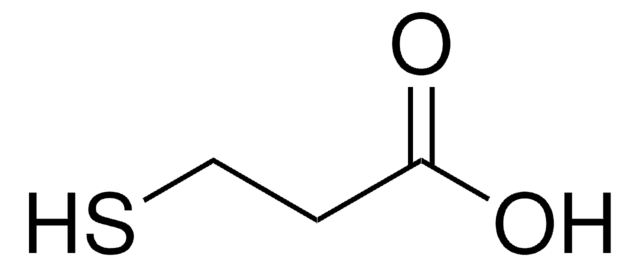QBD10247
Thiol-dPEG®4-acid
>95% (HPLC)
Synonym(s):
Carboxy-PEG4-thiol, HS-PEG4-COOH, Thiol-PEG-acid, Thiol-PEG4-COOH, Thiol-PEG4-acid
About This Item
Recommended Products
Assay
>95% (HPLC)
form
solid or viscous liquid
reaction suitability
reaction type: Pegylations
polymer architecture
shape: linear
functionality: heterobifunctional
shipped in
ambient
storage temp.
−20°C
SMILES string
SCCOCCOCCOCCOCCC(=O)O
InChI
1S/C11H22O6S/c12-11(13)1-2-14-3-4-15-5-6-16-7-8-17-9-10-18/h18H,1-10H2,(H,12,13)
InChI key
ORLGUGSEJFKLED-UHFFFAOYSA-N
Features and Benefits
Legal Information
Storage Class Code
11 - Combustible Solids
WGK
WGK 3
Flash Point(F)
Not applicable
Flash Point(C)
Not applicable
Choose from one of the most recent versions:
Certificates of Analysis (COA)
It looks like we've run into a problem, but you can still download Certificates of Analysis from our Documents section.
If you need assistance, please contact Customer Support.
Already Own This Product?
Find documentation for the products that you have recently purchased in the Document Library.
Our team of scientists has experience in all areas of research including Life Science, Material Science, Chemical Synthesis, Chromatography, Analytical and many others.
Contact Technical Service






![O-(3-Carboxypropyl)-O′-[2-(3-mercaptopropionylamino)ethyl]-polyethylene glycol Mw 3000](/deepweb/assets/sigmaaldrich/product/structures/271/277/d02536f0-83d7-4416-9cea-f6213e09fe85/640/d02536f0-83d7-4416-9cea-f6213e09fe85.png)
